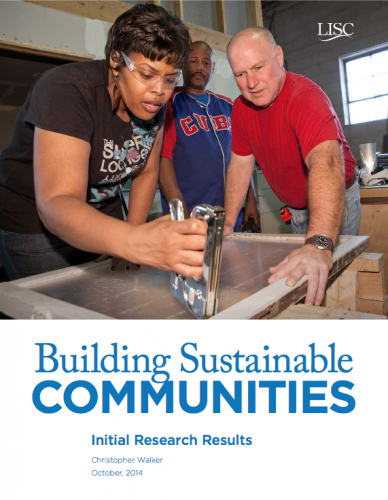Do investments in poor neighborhoods really make a difference? In a new study by LISC, the answer is yes. The report shows that in neighborhoods where LISC invested heavily, jobs and incomes each grew 9 percent more than in similar communities with little or no investment. Michael Rubinger, president & CEO of LISC, says this shows that LISC’s approach to comprehensive community development improves the quality of life for low-income families in a significant way. “This is a real indicator that we are moving in the right direction.”
Message from the President & CEO
We live in a world where data drives understanding. And yet, we’ve been sorely lacking data when it comes to valuing comprehensive community development. We can easily describe projects and programs and talk at length about responsive plans and creative partnerships, but it has been difficult to quantify how these efforts all come together to drive fundamental, lasting change.
In short: Do people really live better in the places where LISC works? The answer is yes. In this first report to evaluate outcomes from our Building Sustainable Communities strategy, we focus on employment and incomes for residents in 63 low-income communities where we are investing. We found a clear correlation between increased LISC investments and improvements in income and employment. What’s more, we see a hopeful sense of resiliency in these places, as they hold their ground when faced with intense economic challenges that have decimated similar communities.
Measuring these kinds of quality-of-life gains is critical. We’ll use the data in our conversations with policymakers, investors, developers and foundations that can help us scale up efforts to revive low-income places. And, it will inform our growing body of best practices to help community development groups across the country expand their impact.
It has not all been smooth sailing, of course. We can see that progress is typically slow, and gains are sometimes uneven. But, at a time when economic inequality is deepening across the country, we see comprehensive community development beginning to bridge that gap. Opportunity grows, and families have a chance to thrive. Over time, troubled neighborhoods can, in fact, become good places to live, work, do business and raise families.
Michael Rubinger, LISC President and CEO
Download summary report
Download full analysis
Source: LISC
Contents
Approach
Impact
Case Study: Olneyville
Case Study: Eastern North Philadelphia
Case Study: Quad Communities
Case Study: Southeast Indianapolis
Summary





